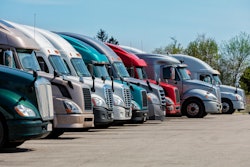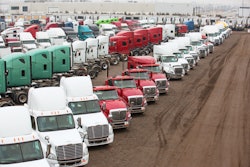Your investment counselor likely recommends a portfolio approach to investments to reduce risk. You want to invest to increase your net worth over time, but higher returns can come with higher risk as markets are unpredictable. They can go up or down, or even flatline.
That advice is also what you are likely hearing regarding buying your trucks. The “portfolio approach” means that you may have hydrogen fuel cell trucks planned for drayage operations in Houston, renewable natural gas trucks operating between Dallas and Chicago, renewable diesel trucks operating between Seattle and Oakland, and electric trucks operating at the ports in Los Angeles and Long Beach.
That all sounds great if you are a big, multi-location national/international fleet with 100 to more than 1,000 trucks, but what about the fleets with one to five vehicles? The portfolio approach does not do much in terms of risk reduction for smaller fleets.
Many of these fleets buy their trucks used in the secondary market. So, they get what is available in inventory at the time and at the location where they are. They do not get to specify the truck like first buyers do. At best, they get to negotiate on whether or not options on the used trucks actually carry any value. For example, does the auxiliary power unit, the sleeper, the 200-gallon fuel tank, the 600 hp motor mean anything to the second or third buyer in their unique duty cycle?
I’ve seen a lot of on-highway flyers designed for long distance hauling turned into urban gravel haulers. Many of those stallions designed for 75 mph long distance overnight trips may wind up as drayage trucks never going over 55 mph for more than a few miles and doing short haul in urban conditions. I’ve seen cement mixers with sleepers because that made sense to someone in the secondary market.
The used truck market originates from the new truck buyer’s choices. Those shiny low-mileage trucks enter service optimized for the first owner’s duty cycle, and then the truck gets traded into multiple other users and duty cycles before hitting the salvage yard 15 to 30 years later.
The zero-emission truck movement is going to impact the used truck marketplace. Where a diesel can be repurposed with some loss of efficiency for other uses, we have yet to see if the same will be true for alternative zero-emission trucks. But necessity is the mother of invention. If only zero-emission trucks are available in quantity in the used truck market, or regulations and/or shippers discourage purchasing fossil-fueled alternatives, the second buyers will have to work with the trucks that are available.
When the world gives you lemons, you make lemonade. The choice is to be creative and stay in business or quit. If the used truck lot only has trucks that can do 200 miles per charge, you have to change your operations to match what the truck can do.
This is nothing new. For decades, changes in lengths and capacities of trailers have been occurring, with ever larger ones becoming dominant. Tractor horsepower has changed dramatically for years. Remember when you just had to have a 600 hp Caterpillar engine in your truck even if you didn’t really need it because it gave you better resale value? Can’t get that anymore. Change happens. Companies deal with it or they go away.
The next evolution of trucking change is coming. Used diesels are going to be worth less in markets where regulators are pushing toward zero-emission dominance. In time, those older trucks will become more of a liability than an asset. They may become repurposed glider kits for hybrid or zero-emission technologies. They may only be worth their weight in recyclable materials. It’s not happening tomorrow but it is on the horizon.
Used truck yards in our freight future will have zero-emission fuel cell and battery electric trucks migrating from the back corner of the lot to the front row. Dealers will have zero-emission truck experts guiding used truck buyers. All those first owner trucks will need to go somewhere.
Or will they? One possibility is the first owner of a zero-emission truck will be the only owner. If the claims of lower maintenance of electric trucks over reciprocating engines come to fruition, new trucks may need a third of the maintenance of their diesel counterparts. That could mean that the new truck may not need to be traded in at 5 years. Perhaps it’s now 10 years where that decision makes sense. What will that do to the used truck market?
There is so much we do not know and can only speculate about when it comes to where the future of trucking is headed. I expect the small fleet buyer will, as always, have to play the cards they are dealt. I have faith they will innovate and stay in the game, as they have through all of the prior changes in the industry.
There will always be massive fleets, medium size fleets and small fleets. Those fleets buying new trucks will largely dictate the vehicles that second and third buyers will choose from. Those secondary market duty cycles will become more challenging to force fit zero-emission trucks into, but innovators will find a way to do it. What choice will there be?













